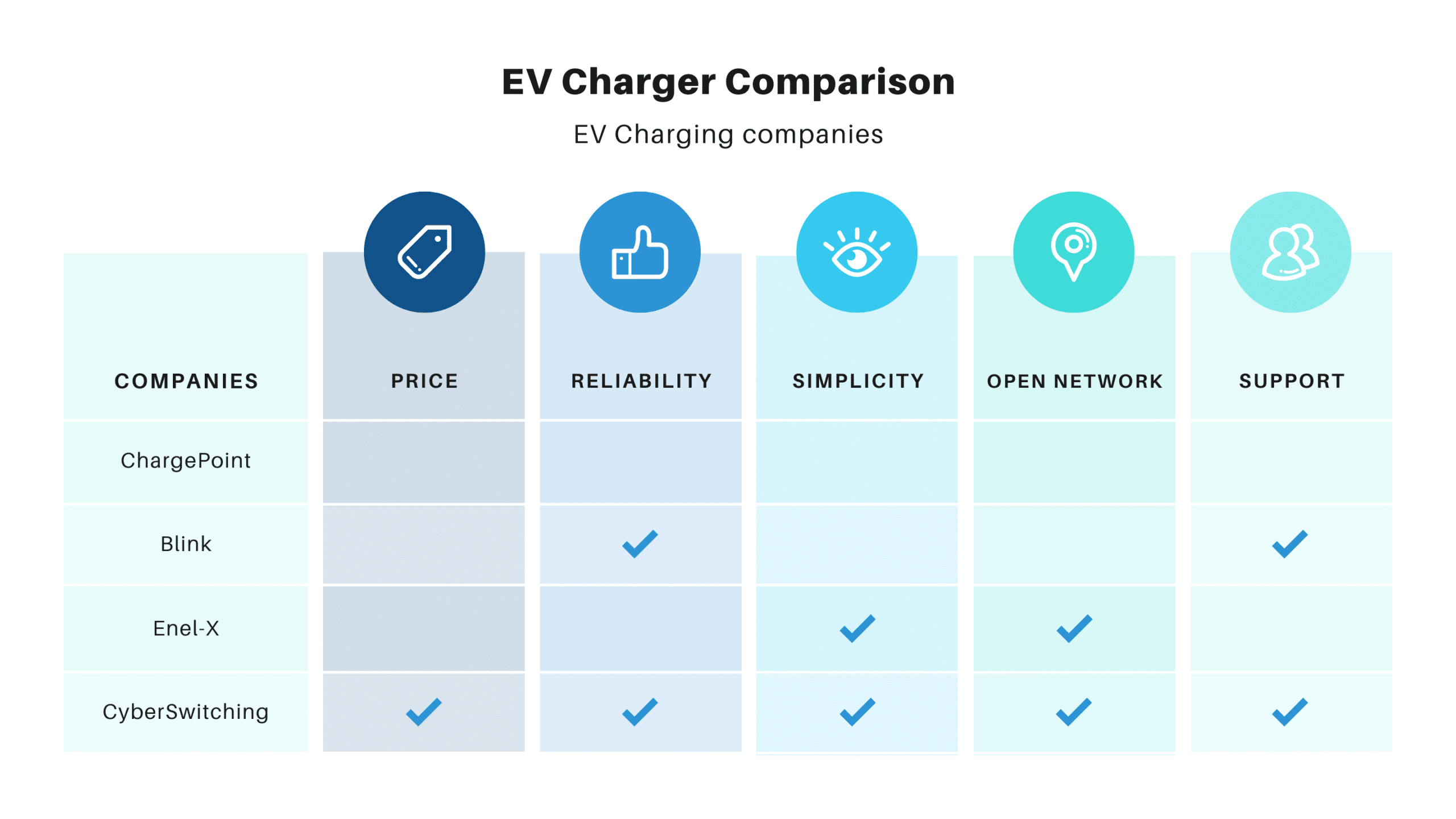Home / Commercial EV Charging Station / EV Charging for Auto Dealerships
EV Charging station companies comparison

$3,950.00 Original price was: $3,950.00.$3,450.00Current price is: $3,450.00.
$2,890.00 Original price was: $2,890.00.$2,790.00Current price is: $2,790.00.
$1,650.00 Original price was: $1,650.00.$1,590.00Current price is: $1,590.00.
Amid the rising tide of electric vehicle (EV) adoption, auto dealerships are actively exploring the integration of cutting-edge charging stations. As 71% of U.S. drivers express a willingness to embrace EVs, the incorporation of charging infrastructure becomes a pivotal strategy for auto dealerships aiming to stay ahead of the curve and align with evolving consumer preferences.
Moreover, having EV charging stations on-site can be a powerful marketing tool, attracting environmentally conscious customers and contributing to the dealership’s overall brand image. It sends a clear message that the dealership is adapting to the changing automotive landscape and is prepared to meet the needs of a growing segment of the market.
In addressing the unique challenges of EV charging stations, Cyber Switching’s CSE1 stands out as a strategic solution for auto dealerships. Furnished with advanced productivity tracking capabilities, the CSE1 enhances operational efficiency, offering auto dealerships a streamlined and data-driven approach to manage and optimize EV charging activities. Beyond its role as a conventional charging station, the Cyber Switching CSE1 model transcends expectations, establishing itself as a strategic investment poised to elevate the overall EV infrastructure of forward-thinking auto dealerships.
While customers will have many questions about having an EV that could be answered directly, there is nothing better than showing the customer, on the sale-spot, everything that they need to know about the charging and management process. An electric car charging station dealership will be ready for customers to take a look and feel the experience of having an EV. This not only relieves concerns that potential customers may have but also increases the chances of making a sale.
Having an EV charging station dealership provides additional benefits that not even today’s car dealerships have. By setting up a public EV charging station you will be able to bring new potential customers who need to stop by to charge their EV. While in regular dealerships customers go specifically because they need to get a vehicle, an electric car charging station dealership will increase the traffic volume of your business and give sales reps the chance to catch potential customers’ interest with new models and developments.
In addition to the previous benefits, you will also be able to set pricing for the kWh consumed, control costs and make a profit from the service. It can also attract new customers who value sustainability, leading to increased sales and profits. Additionally, it can enhance your brand image and show your commitment to the environment. Having an EV charging station can also help you stay ahead of the competition as electric cars become more popular. Overall, investing in an EV charging station can generate revenue and keep you competitive in the industry.
Alton Blakley Honda

Fields BMW of Daytona

Ford Motor Company

Hyundai R&D Center

Selecting the right EV charging station for your auto dealership requires careful consideration of several key factors. Here are some important aspects to keep in mind:
By carefully considering these factors, auto dealerships can make informed decisions when selecting EV charging stations, ensuring they meet both current and future needs while providing an optimal experience for their customers.
No, the CSE1 is designed with a SAE J1172 Type 1 Charging interface, which is a standard industry connector that all EVs are compatible with.
The main factor is the power rating of the EV charging station. The higher the kW value, the higher current the EV station will provide and the faster the car will get charged. However, there are other factors that also play a role in the charging speed including:
The EV industry will not stop and will continue its expansion. For your car dealership to stay in business you must make the switch to an EV based fleet for sale. EV charging auto dealerships will have better chances of making a sale than car dealerships that do not have EV charging stations. Having EV chargers within your property premises also alleviates range anxiety and provides comfortability for users. Moreover, you will also have access to state incentives that promote the development of EV charging stations across the country
Yes, there are multiple state level incentives available. CyberSwitching CSE1 EV charging stations got approved by over 75 rebate programs nationwide.
Yes, both the CSE1 and CSE2 charging station are ETL-listed equipment with a Type 3 enclosure that is rated to work indoors or outdoors. This means they’re rated to prevent dirt and dust from entering inside the equipment and is also protected against rain, snow, or sleet.
Both CSE1 and CSE2 EV charging stations could be mounted on the wall, on a standard pedestal as well as on the pedestals with cable management
CNET

TechCrunch

Nasdaq

TechTimes

IBT

Yahoo

Torque

Hackernoon

Email: info@cyberswitching.com
Phone: 1.408.436.9830
Having trouble? Find the answer to your query here. Don’t hesitate to contact us!
Follow our latest news and thoughts which focuses exclusively on Power Management and EV Charging
Your Power Management Partner for Over 25 Years Future Generations Depend on Our Decisions Today ™
2024 © All rights reserved by CyberSwitching